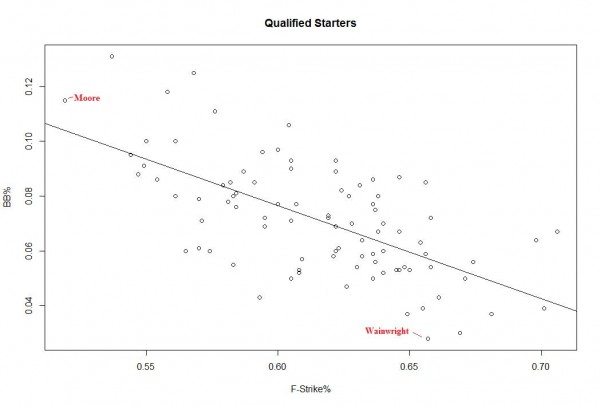Be a GM: Miami Marlins – Part 3 – Trade Deadline
From my personal blog msilbbaseball.wordpress.com
—–
The Miami Marlins are always in the news at the Trade Deadline, and the story is no different in 2013.
Bullpen
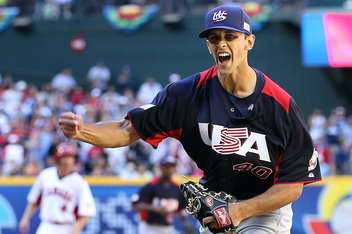
The Marlins possess sought after relievers Steve Cishek, Mike Dunn, Ryan Webb, and Chad Qualls. Cishek, Dunn, and Webb still have multiple years under team control, while Qualls’ is signed on a one-year deal. Of the four, I would be most inclined to keep Cishek, who is currently closing games for the Marlins, and doing so extremely well. Qualls is the most likely to be dealt, as the Marlins don’t want to part with valuable bullpen arms who could contribute to next year’s team. Also, they don’t want to leave the young starting rotation with an inexperienced bullpen to back them up for the remainder of this season. Qualls would be a rental reliever for any team, as a 34 year-old journeyman doesn’t scream “Long-term plans”. Nevertheless, Qualls has caught fire in 2013, putting up the best season of his career. Through 42 IP in 42 Appearances, Qualls has put up a 2.57 ERA, 1.024 WHIP with a 7.29 K/9 and a 1.93 BB/9 leading to a 3.44 FIP.
UPDATE (9:57 PM) – Chad Qualls fell while celebrating a strikeout tonight. Stay hot kid.

The Marlins dealt relief to a contender at last year’s deadline as well, sending Edward Mujica to the Cardinals for 3B prospect Zack Cox. Mujica had a 4.38 ERA at the time he was sent to St. Louis, so Qualls’ numbers are significantly superior. However, Mujica was just 28 at the time, and still had a year of Arbitration remaining, which increased his value. All things considered, Qualls should be able to produce the same return as Mujica did, possibly more. What Mujica brought in was fairly significant. Zack Cox was the Cardinals #4 prospect heading into 2012 by Baseball America. He was drafted in the first round out of the University of Arkansas in hopes that he would develop into a premier hitter. He showed that ability during his first full minor league season in 2011, but fell off dramatically in 2012, hitting .254/ .294/ .421 in the hitter-friendly Pacific Coast League. Cardinals management decided it was time to move on from Cox, and shipped him to the Marlins, who sent him back down to AA. Cox has been solid in AA this season, hitting .292/ .393 / .391. his power numbers decreased, but he’s hitting more consistently as the Marlins are allowing him to take a slow track through the system. He has the Marlins’ future 3B job in his sights, but will be competing in the system with recent 1st round pick, Colin Moran out of UNC.
In my opinion, the Marlins sold Mujica enormously high The Cardinals’ frustration with Cox allowed him to be moved at a fairly cheap price, and it’s difficult to say that this trade is comparable to what the Marlins can get for Qualls. Nevertheless, this shows that the Marlins can target mid-level prospects (or seemingly declining former top level prospects) in exchange for Qualls.
Decision: Avoid trading Qualls for the sake of trading him. Aggressively shop him around, but if the return isn’t right (comparable to Mujica’s return), try to negotiate a 2014 contract in the off-season. Cishek, Dunn, and Webb are main contributors to the Marlins bullpen, and with the team appearing to be a contender in 2014, I would want to keep that consistency.

Veteran Position Players
The Marlins could potentially move Placido Polanco, Juan Pierre, Greg Dobbs, and Justin Ruggiano. Polanco and Pierre are signed to one-year deals, and will be Free Agents after the season. Dobbs is in the last year of a two-year contract. All four are most likely fits on the bench for a contender, and none of them would be able to bring in a significant return. Ruggiano had a breakout year in 2012, his first full season, hitting .313/ .374/ .535 in 91 games. However, he’s slumped this year, removed from his everyday role, floating around a .200 batting average. He holds the most value, as he still has another season before he’s arbitration eligible, and teams may hope that he returns to his 2012 form. However, his remaining pre-Arb year is valuable to the Marlins as well, who didn’t want to move him a few weeks ago. The Marlins called up their top two outfield prospects last week, which makes Ruggiano slightly more available.
Decision: Without much to gain in return, I’d hold on to the veterans, and try to retain Polanco, Pierre, and Dobbs for another year to serve as valuable bench players for the 2014 season.
Giancarlo Stanton
The feature of this article, and many national news stories is Right Fielder Giancarlo Stanton. I’ve admittedly flip-flopped back and forth about what the Marlins should do with the face of the franchise. He’s 23 years old, and will be arbitration-eligible for the first time after this season, which will increase his salary by a couple million dollars. He led the league in slugging in 2012, and had already amassed over 100 career Home Runs. He is a budding superstar, and teams are willing to pay a very high price for him.
Keep Him
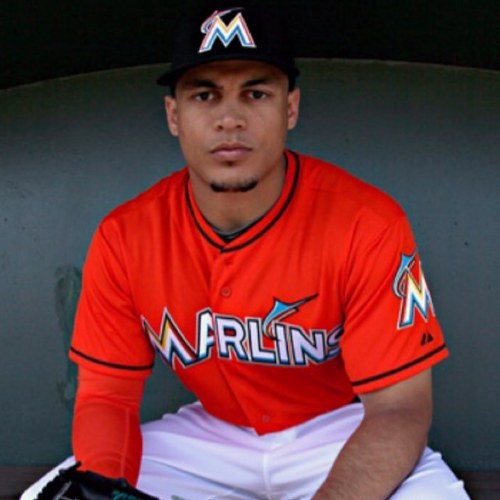
The Marlins are historically known to being a penny-pinching team, but are in a position to spend big money, which they have available to give to Stanton. If the Marlins stick with Stanton, I see them avoiding arbitration this year with a one year deal in the neighborhood of $7-8MM. I then project him to earn $10-12MM after 2014, and $13-15MM after 2015. To avoid paying Stanton $13-15MM for 2016, and then have a future long-term deal based on that salary structure, I would begin working on a back-loaded multi-year deal immediately after the season. My first offer of a proposed contract would follow a similar structure to my predicted arbitration salary hike, but then level off around $17-18MM for 2016 and beyond. Miguel Cabrera, former Marlins emerging offensive superstar, signed a long-term deal with the Tigers in 2008, which levels off at about $20MM per year. In my opinion, Stanton has shown the potential to deserve a similar contract, but there is no way that I would begin the negotiations at Miguel Cabrera’s deal.
Trade Him
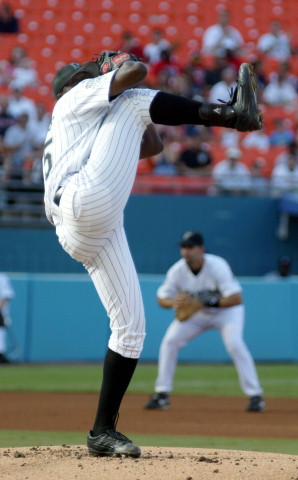
Stanton’s value is as high as it’s ever been. As mentioned before, he’s an emerging superstar who is just reaching arbitration for the first time. Comparing him again to Cabrera, the Marlins traded him after the 2007 season to the Detroit Tigers along with pitcher Dontrelle Willis for the Tigers #1, 2, 6, 8 rated prospects according to Baseball America, along with other mid-low level players. The Marlins would be able to reel in at least three of a team’s top ten prospects, ideally two of the top five. In my opinion they should throw in one of the relievers teams have been calling for (preferably Qualls) to bump up the level of the prospects they would receive.
The most important thing to consider in this situation, is that the Marlins already have multiple potential replacements for Stanton. According to Baseball America, three of the Marlins’ top five prospects are outfielders, all of whom have been in the majors this season (Christian Yelich #2, Jake Marisnick #4, Marcell Ozuna #5). Beyond those three, they also feature Jesus Solorzano, Austin Dean, Brent Keys, and Isaac Galloway in a rich system of minor-league outfielders. Stanton is simply not at a premium position of need for the Marlins, which in my opinion makes him expendable. Also, the millions of dollars that would be used to lock up Stanton could be better used to lock up the Marlins phenomenal young pitching staff.
Don’t Trade Him
The rebutting argument against trading Stanton is how unpredictable trading for prospects can be. Once again, the Marlins traded Miguel Cabrera and Dontrelle Willis to the Tigers for four of their top ten prospects, including #1 and #2. A total of zero of them are still with the Marlins, and Cameron Maybin (#1) and Andrew Miller (#2) never lived up to their potential. All those two names do is make Marlins fans cringe. Bad trades happen, Major Leaguers are known commodities, while prospects are prospects, something that might be good in the future. The unpredictability and risk of trading Giancarlo is something that cannot be over-analyzed.
Decision: Make Stanton Available, and listen to offers, but don’t undersell him
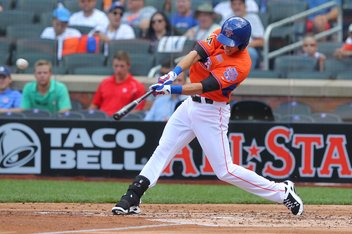
If a team wants to give you their entire future, then by all means go for the trade. But if I’m Michael Hill, and I’m not receiving everything that I want from a team, then there’s no deal. If I’m trading Giancarlo Stanton to your team, I want to be able to go through your organization, and hand-pick the players I want like I’m at a buffet. If any compromise has to be made, then it’s no deal. Stanton won’t break the bank in the off-season, and it’s worth keeping him around to see if the Marlins can be truly competitive in 2014, which I believe is very possible, barring unforeseen injuries.
Needs
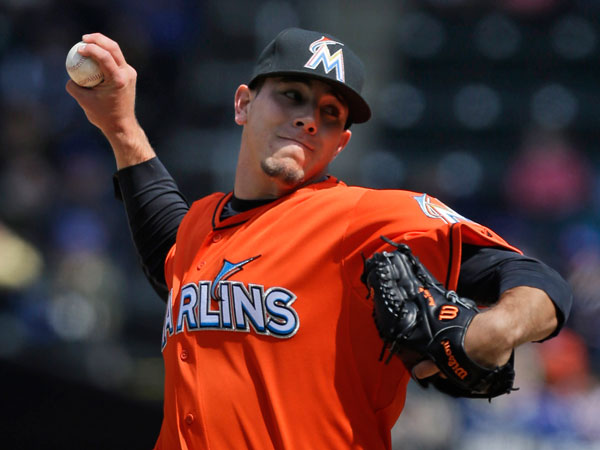
The most difficult part about making trades for prospect is to decide where you need help. The Marlins are set in the outfield, no question about that. 3B seems locked down with Cox and Moran, and I’m a big fan of future Gold Glove winner Adeiny Hechavarria at SS. Derek Dietrich hasn’t been amazing at 2B, though I really like Ed Lucas. If only he wasn’t 31. Donovan Solano could still be a fit, but this is a position that could use improvement. At 1B, there isn’t much behind Logan Morrison, who is finally fully healthy. Rob Brantly has been a disappointment behind the plate after impressing at the end of 2012 after he came over from the Tigers for Omar Infante and Anibal Sanchez. Brantly is still just 24, but is hitting .232/ .283/ .294 while splitting time with Jeff Mathis. Former first round pick Kyle Skipworth hasn’t been able to hit at any level, and relying on J.T. Realmuto to be the future isn’t a safe bet. The Marlins pitching is phenomenal, led by Jose Fernandez, and followed by Nate Eovaldi, Jacob Turner and Henderson Alvarez. The Marlins also have Andrew Heaney and Justin Nicolino in the minors among others with a young pitching staff whose future is just as bright, if not brighter than the Marlins’ outfield crop.
Trade Possibilities
Chad Qualls
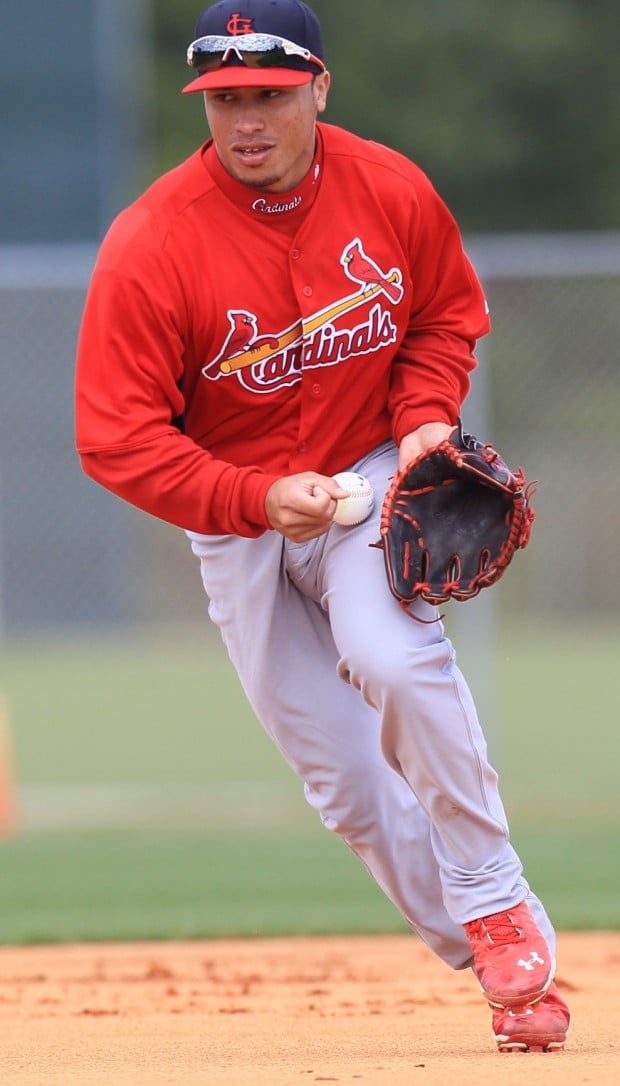
If we assume that Chad Qualls can bring in a similar return to Edward Mujica, then we’re talking a downward-trending lower high-level prospect (if such a thing exists) or a mid-level prospect. I love what the marlins did in the Mujica trade, by taking a risk on a possible high-level guy, who is having a bad season. If the Marlins deal with the Cardinals again, Kolten Wong’s name has been thrown around, as he’s blocked at the Major League level by Matt Carpenter. However, the Marlins aren’t likely to be able to put together the package for him without having to part with an integral piece. His name has been linked to a potential Alexei Ramirez trade, who holds more value than Qualls. The Marlins would have to throw in another reliever or two (Dunn, Cishek, or Webb), or maybe even Derek Dietrich who replace Wong’s spot in the Cardinals system, obviously to a lesser extent. As an outsider, it’s unclear what the asking price is for Wong, but maybe the Cardinals could sell low again. Wong is more highly regarded than Cox was at this time last year, but then again Qualls has been better than Mujica was, and the Marlins have arms to give.
Giancarlo Stanton

I’m trying very hard not to be one of those internet users who has no sense of trade balance, but it would take a completely unreasonable package for me to trade Stanton right now. The Red Sox reportedly are willing to give up everything to get Giancarlo. Any deal with them would need to include Xander Bogaerts, and Henry Owens, plus much more. Bogaerts plays the same position as Hechavarria, but could move over to 2B to create a stellar middle infield that already has me excited. Bogaerts, the Red Sox #1 prospect by BA, is a 20 year old from Aruba, who has absolutely torn it up in the minors. Owens, their #5 prospect, recently turned 21, and has pitched very well at High-A Salem. The Red Sox also have C Blake Swihart at #6 who is showing an upward batting trend. Their #2 prospect, former South Carolina Gamecock standout, Jackie Bradley Jr. has already spent time in the majors, but being an Outfielder isn’t necessarily attractive to the Marlins. Again, I’d just pick out the Red Sox star prospects, and if I can’t have everyone I want, then sorry Beantown, Giancarlo will still be a Marlin.
The Pirates and Rangers have also expressed interest in Stanton. For me, the Pirates would have to part with Gerrit Cole and Jameson Taillon at least. It would create a very crowded pitching rotation for the Marlins, but is that ever a bad thing? Unfortunately for the Pirates, many of their top prospects are Outfielders which doesn’t help. The Rangers have Jurickson Profar, who has been playing 2B. However, they just traded for Matt Garza which took a hit out of their system, and don’t have many other guys close enough to being Major league ready for me to feel comfortable about.
If Stanton does get traded, I’m thinking that it’s going to be the Red Sox.



